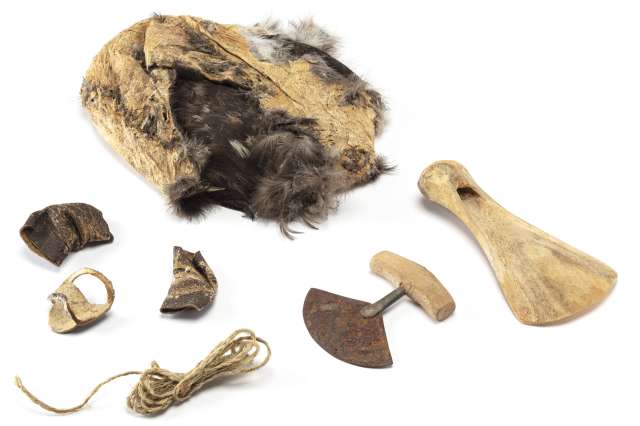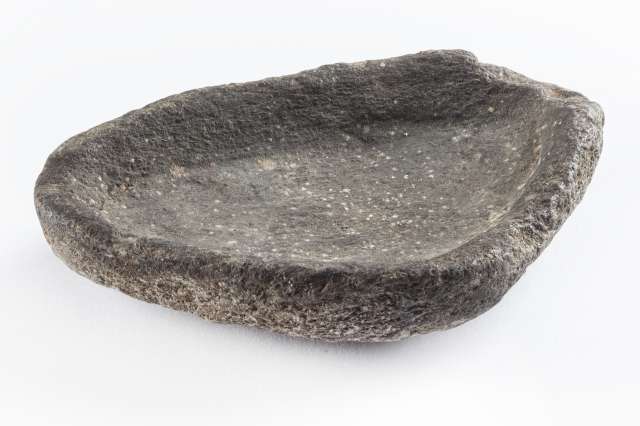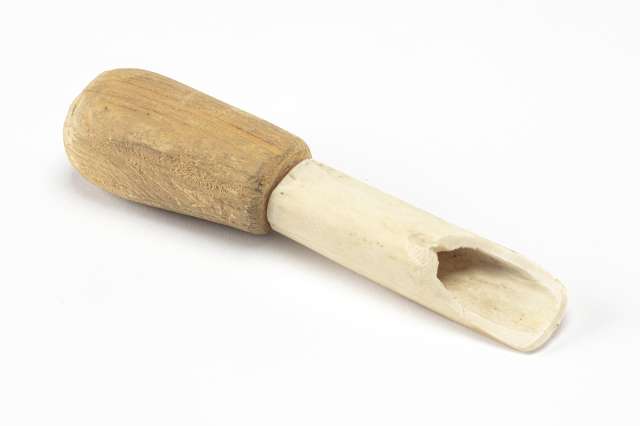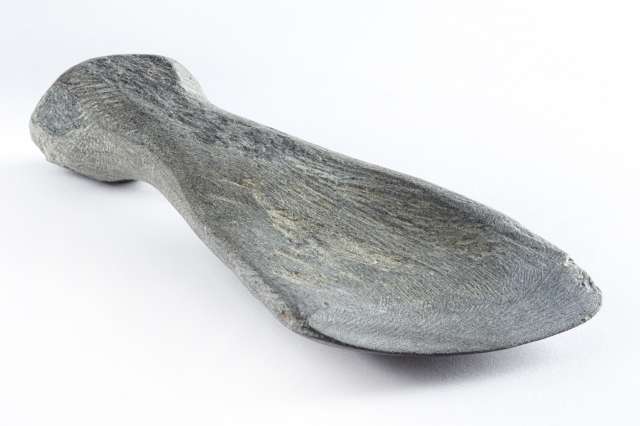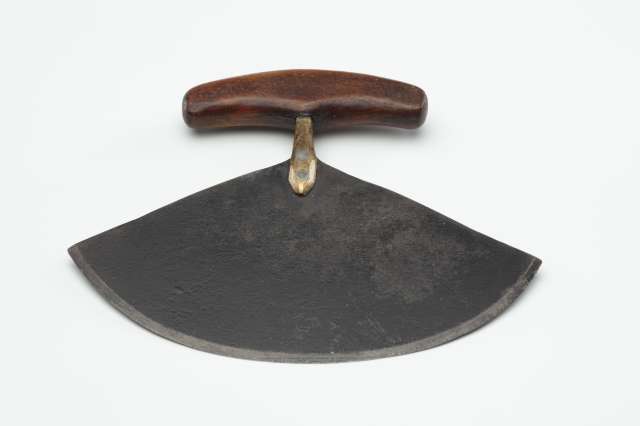Sewing kit
The kit is composed of several tools used by women and kept in a pouch made from the skin of a common murre. The tools include a half-moon-shaped knife (uuktuut), a scraper (qaluuti), a thimble (tikiq), two finger protectors, and a braided string made of caribou sinew (nuki).
Knife
The half-moon-shaped woman's knife, generally named an ulu, has several uses. The one in this kit, small in size and called an uuktuut, was used specifically to cut patterns in the skin of a seal, especially a bearded seal. Because this skin was especially difficult to prepare, the blade had to be thin and very sharp.
Scraper
This scraper was not used to prepare skins. It was instead used to remove the urine that had collected from an infant in the back pouch of its mother's coat or on a skin where it slept.
Finger protection
The thimble and the finger guards are made of bearded-seal skin. They protected the fingers of a seamstress when she was working with a skin to make clothing. The thimble would be worn on a finger, most often her thumb, so that she wouldn't prick herself and could push the needle through the skin more comfortably. She would also wear finger protectors with open tips when tightening a stitch, to avoid scratching herself. Nowadays, women mainly use metal thimbles.
Sewing thread
Finally, the sewing kit also includes a length of braided thread made of fibres from caribou dorsal sinews (nuki). This thread could be used to sew clothes, tents, or kayaks. When braided, caribou nuki was used to tie different items together. Although store-bought sewing thread is now used, Inuit often praise caribou nuki for being solid, durable, and waterproof.

